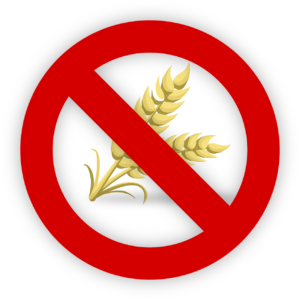When it comes to protecting our bodies from potential health threats, we often think about ways to keep our hearts healthy or prevent diseases like diabetes. However, one crucial aspect that we shouldn't overlook is the health of our brains.
Brain stroke, also known as stroke, can have devastating effects on a person's life, leading to disabilities or even death. In this blog post, we will discuss six effective techniques to ward off stroke and keep your brain healthy and functioning at its best.
1. Understand and Manage Your Blood Pressure
High blood pressure, often termed the "silent killer," is a primary risk factor for brain stroke. It silently damages the brain's blood vessels over time, making it crucial to monitor and manage it effectively. Regularly checking your blood pressure, even if you feel fine, should be part of your routine health checks. Working in tandem with a healthcare provider can help you determine the best approach to manage high blood pressure, which might include lifestyle adjustments and medication.
Adopting a diet low in sodium and rich in potassium can aid in naturally lowering blood pressure levels. Engaging in regular physical activity also plays a vital role; even modest amounts of exercise can lead to significant benefits in blood pressure control.
Moreover, stress management techniques such as meditation, deep breathing exercises, or yoga can contribute to maintaining healthy blood pressure levels. These practices not only help in controlling blood pressure but also enhance your overall well-being, creating a robust defense against the risk of stroke. It's imperative to make these strategies a consistent part of your life to ensure the health and protection of your brain.
2. Embrace a Heart-Healthy Diet

Choosing foods that nurture your heart directly supports brain health, effectively setting up a defense mechanism against stroke. Incorporating a variety of colorful fruits and vegetables into your meals can provide essential vitamins, minerals, and antioxidants that help prevent vascular damage. Whole grains, such as oatmeal, brown rice, and whole wheat bread, offer fiber that aids in lowering cholesterol levels, a critical factor in stroke prevention.
Lean proteins, particularly from plant sources like beans and lentils, as well as fish rich in omega-3 fatty acids, contribute to a balanced diet that supports cardiovascular health. Including healthy fats found in avocados, nuts, and olive oil can also play a significant role in reducing inflammation throughout the body, including in the brain and blood vessels.
Making these dietary choices can promote a healthier heart, subsequently minimizing the risk of stroke. It's beneficial to be mindful of portion sizes and aim for a diverse diet to ensure you're getting a wide range of nutrients essential for maintaining a strong and healthy brain.
3. Maintain a Healthy Weight

Achieving and preserving an optimal weight plays a pivotal role in stroke prevention. Excess body fat, particularly around the waist, can heighten the risk of stroke by fostering conditions such as hypertension, diabetes, and cardiovascular disease. Initiating a strategy that combines balanced nutrition with consistent physical activity is key to managing weight effectively. Incorporate a diet rich in fruits, vegetables, whole grains, and lean proteins, all of which support a healthy weight while providing the nutrients your body needs to function optimally.
Physical activity, on the other hand, burns calories and builds muscle, creating a beneficial cycle that not only helps in weight reduction but also bolsters cardiovascular health. It's important to set realistic goals, focusing on gradual weight loss of about 1 to 2 pounds per week, as rapid weight loss can have negative effects on your health.
Engaging in activities that you enjoy, such as dancing, hiking, or playing sports, can make exercise feel less like a chore and more like a rewarding part of your day. If you're unsure about how to start or if you have existing health concerns, consulting with a healthcare provider or a dietitian can provide personalized guidance tailored to your individual needs and goals. This holistic approach to maintaining a healthy weight can significantly lower the risk of stroke, enhancing your quality of life and ensuring your brain remains safeguarded against potential threats.
4. Keep Diabetes Under Control

Diabetes significantly elevates the risk of stroke by causing harm to the body's blood vessels and promoting the likelihood of clot formation due to elevated glucose levels in the bloodstream. For those living with this condition, meticulous management is essential to mitigate these risks. Adherence to prescribed medication regimes plays a crucial role in stabilizing blood sugar levels, while personal lifestyle choices can further influence diabetes management positively.
Engaging in a diet that emphasizes low-glycemic index foods, such as leafy green vegetables, whole grains, and lean proteins, can help in maintaining steady blood sugar levels throughout the day. Regular physical activity complements dietary management by enhancing insulin sensitivity, thereby making it easier for the body to regulate glucose levels effectively.
Additionally, routine monitoring of blood sugar provides immediate feedback, allowing for adjustments in diet, exercise, and medication to better control diabetes. Education about the disease, consistent healthcare consultations, and a supportive network can empower individuals to make informed decisions regarding their health, minimizing the chance of complications such as stroke. It's vital for those with diabetes to recognize the power of comprehensive disease management in protecting their brain health.
5. Exercise Regularly

Embarking on a journey of regular physical activity can be a transformative experience for your brain health. The connection between systematic exercise and stroke prevention is robust, driven by the positive changes exercise induces in the body. Engaging in regular physical activity bolsters cardiovascular strength, which in turn, benefits the intricate network of blood vessels within the brain. This enhancement in cardiovascular health facilitates the smooth and efficient flow of blood, delivering essential nutrients and oxygen more effectively to brain cells.
The types of activities that can contribute to this protective effect are varied, allowing for flexibility in how one chooses to stay active. Activities that raise your heart rate and get your blood pumping—such as jogging, aerobics, or even brisk walking—can be particularly effective. For those looking for lower-impact options, swimming offers a comprehensive workout that is gentle on the joints while still providing cardiovascular benefits. Cycling, whether outdoor or stationary, is another excellent way to engage in moderate-intensity exercise that supports brain health.
Incorporating strength training exercises a couple of times a week can further amplify these benefits. Building muscle not only aids in burning calories more efficiently but also contributes to better blood sugar control, a crucial factor in reducing stroke risk.
The beauty of committing to regular exercise lies in its versatility and the personal satisfaction it brings. Finding activities that you genuinely enjoy can make regular exercise feel less like an obligation and more like a rewarding, integral part of your daily routine. Whether it’s joining a community sports team, taking part in group fitness classes, or simply enjoying a daily walk in nature, the key is consistency. Establishing a routine that includes a variety of activities can help keep things interesting and maintain your motivation over the long term.
By making physical activity a regular fixture in your life, you take a proactive step towards protecting your brain, optimizing your health, and effectively reducing the risk of stroke.
Limit Alcohol and Avoid Smoking

Modifying lifestyle habits such as alcohol consumption and tobacco use can play a significant role in stroke prevention. While moderate alcohol use might have certain health benefits for some individuals, it's essential to understand the risks that come with excessive drinking. Habitual overconsumption of alcohol can lead to an elevation in blood pressure, a known risk factor for stroke, and can also increase the likelihood of developing irregular heart rhythms. These conditions can directly impact the flow of oxygen and nutrients to the brain, elevating stroke risk. Opting to reduce alcohol intake to low or moderate levels can mitigate these risks, contributing to overall vascular health and decreasing the likelihood of stroke.
Tobacco use, on the other hand, has a direct and detrimental effect on cardiovascular health. Smoking cigarettes introduces a host of harmful chemicals into the body that can damage the lining of arteries, promote the buildup of plaque, and decrease oxygen levels in the blood. These factors collectively heighten the risk of clot formation and subsequent stroke. Additionally, exposure to secondhand smoke can also increase stroke risk, emphasizing the importance of not only quitting smoking oneself but also avoiding environments where cigarette smoke is prevalent.
Taking steps to either quit smoking or reduce exposure to tobacco smoke is crucial for anyone looking to decrease their stroke risk. Various resources are available to assist in this endeavor, including cessation programs, nicotine replacement therapies, and support groups, which can provide the guidance and encouragement needed to overcome addiction.
Incorporating these lifestyle adjustments—limiting alcohol intake and avoiding tobacco—into your daily routine can significantly bolster your defense against stroke. These changes, along with maintaining a healthy diet, regular physical activity, and monitoring other health conditions, form a comprehensive strategy for protecting your brain and ensuring your long-term health and well-being.






